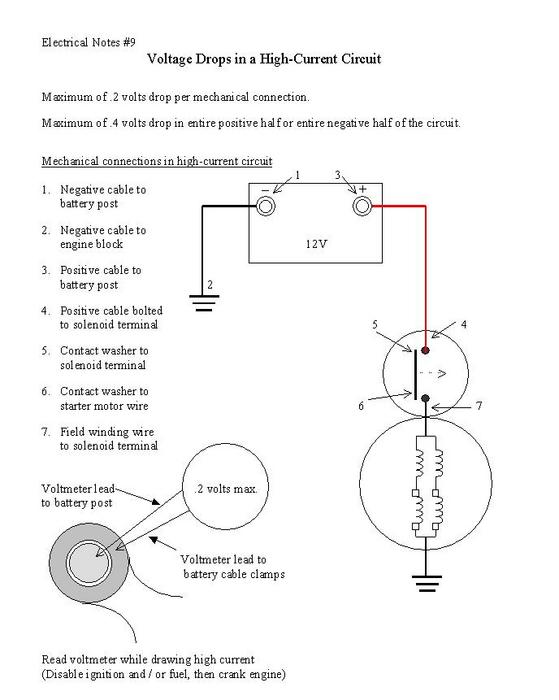First of all, since you know how to take the measurements, let me go into more detail. 8 volts is too low, and 5.5 volts is not going to get the job done. Starters, and ignition systems during cranking, are designed to operate properly on no less than 9.6 volts. You have half of that.
I'm including a diagram I drew up for my students that might help. When you measure the battery voltage while a helper cranks the engine, put the voltmeter probes right on the battery posts, not the cable clamps. If you have 7-8 volts right there, the battery is either discharged or has a dead cell. If the battery is fully charged and good, it will read close to 12.6 volts when not cranking the engine. A good but discharged battery will read about 12.0 volts.
If the battery voltage stays above 9.6 volts during cranking, move one meter probe to the cable clamp and try again. You should get the same reading. If the reading is less, check that connection for corrosion and to be sure it's tight. Since the battery will be running down from the repeated cranking and voltage readings will too, there's a more effective way to make these measurements as shown in the drawing at the bottom left. Put one meter probe on the battery post and the other one on that cable clamp, then measure the "voltage drop" during cranking. Ideally there will be 0.0 volts but up to 0.2 volts is acceptable. If you find anything higher, that connection must be cleaned and tightened.
That 0.2 volts applies to any mechanical connection and the difference between any two points in that part of the circuit such as at both ends of a cable. Also, 0.4 volts is the maximum allowable drop in all of the negative circuit, (of which there are only two connections), and all of the positive circuit. So even if every mechanical connection in the positive circuit has 0.19 volts drop, and there's four or five of them, the total of all of those drops can't be more than 0.4 volts.
What this all boils down to is you gotta figure out where all that voltage is being lost in a connection or cable. When you get down to the starter, put the meter probe on the terminal that is crimped to the end of the cable, THEN on the stud that terminal is bolted to. That is both sides of another mechanical connection where the voltage drop could occur. You can't get inside the solenoid to measure the drop across each contact (5 and 6 in my drawing), but you can measure after those contacts on the braided wire that goes into the starter motor. Here again, measure on the stud first, then on the braided wire, or to measure the drop directly, put one meter probe on each one and take the reading during cranking. Taking readings across that connection can be pretty inconvenient and it's rare to find the problem way down there. Usually you'll find a bad connection in the positive circuit or in that cable.
Image (Click to make bigger)
Friday, June 24th, 2011 AT 8:21 PM




